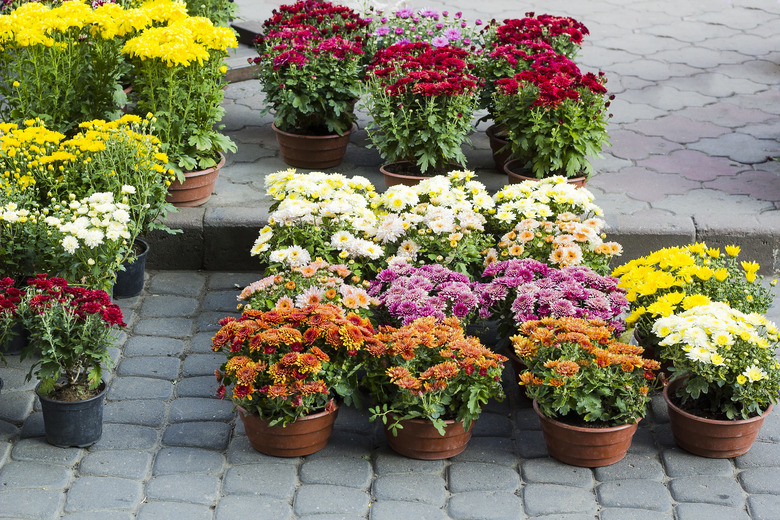How To Deadhead Mums
We may receive a commission on purchases made from links.
Mums bring fall color to just about any home garden, but the blooms may last longer if you deadhead those spent blooms in the fall. Mums (Chrysanthemum spp.) also benefit from pinching back shoots in late spring and early summer to promote bushy growth.
Deadheading Your Mums
Deadheading Your Mums
Each fall, mums brighten up the garden when other flowers are starting to fade. Most mums are hardy in U.S. Department of Agriculture zones 5 through 9, although there are a few varieties that are suitable for zone 4. Deadheading your mums after they've bloomed will help your plant put more energy into producing more blooms.
Deadhead spent blooms by cutting or pinching the stem under the base of the flower. Deadheading, says Proven Winners, not only gets rid of the old flowers and foliage foliage, but it prevents the plant from putting its energy into creating new seeds at the location of the bloom.
To deadhead, use a pair of sharp, sanitized pruning shears and make quick cuts. Be sure to cut off the flower seed pod as well as the flower petals. You can best do that by cutting the flower just above the first leaf at the top of the stem. You can also pinch it off with your fingers, but you'll make a better cut using garden shears.
Why Deadhead Plants
Why Deadhead Plants
As stated above, deadheading helps a plant conserve energy by not producing seeds. Flowering is a survival method that nature has developed to help plants produce new seeds and keep producing. Gardeners who prize blooms over seeds would rather their plants spend more energy on blooms and less energy on reproducing. Once that new seed has developed, the plant is less likely to produce flowers. For hybrid mums that don't produce seeds, deadheading helps the plant to branch out, which produces more stems that bear more flowers.
Because mums have a shorter bloom time than many summer flowers, about six to eight weeks, gardeners like to keep these cheerful, rounded plants blooming well past the first light frost. Deadheading spent blooms is one way to do this.
Pinching Back Mums
Pinching Back Mums
Besides deadheading, mums can use some pinching back throughout the growing season. Hardy mums will start growing shoots in the spring, along with other perennial plants. But with mums, once each shoot is about 6 inches long, pinch them back about 1 inch to help your plant develop a more rounded, less leggy, bushy look.
Pinching will also help your mum produce more flowers in autumn. The Old Farmer's Almanac suggests that you continue to pinch 1 inch off your stems once per month through mid-July. Once flower buds develop, stop pinching the stems.
You can pinch using garden shears or simply by using your thumb and forefinger, making a quick snap. To be sure you don't pull off the rest of the stem, hold that portion with your other hand while you snap off the top of the stem.
Caring for Mums
Caring for Mums
The best time to plant mums is not in the fall but in the spring. That gives the plant time to adapt to the soil and grow strong roots throughout summer and fall. In turn, that will help the mum better survive winter.
As winter approaches, don't give in to the temptation to cut your mums to the ground, especially if you live in an area where the temperature can dip to zero. Even if you planted your mum in the fall, this will give it a better chance of making it through winter. Remove the dead foliage in spring.
Water your mum regularly around the base of the plant until the ground freezes, but make sure the soil is well drained. Mums don't like standing water. Add a thick layer of mulch, around 4 inches, to protect the shallow roots. Starting in spring, add a balanced organic fertilizer monthly through the growing season.
References
- The Old Farmer's Almanac: Growing Chrysanthemums
- Proven Winners: To Deadhead or Not to Deadhead
- Missouri Botanical Garden: Chrysanthemums for the Home Garden
- Gilmour: Chrysanthemums: The Ultimate Guide to Growing Beautiful Mums
- Iowa State University Extension and Outreach: The Green Scene: Caring for Potted Mums
